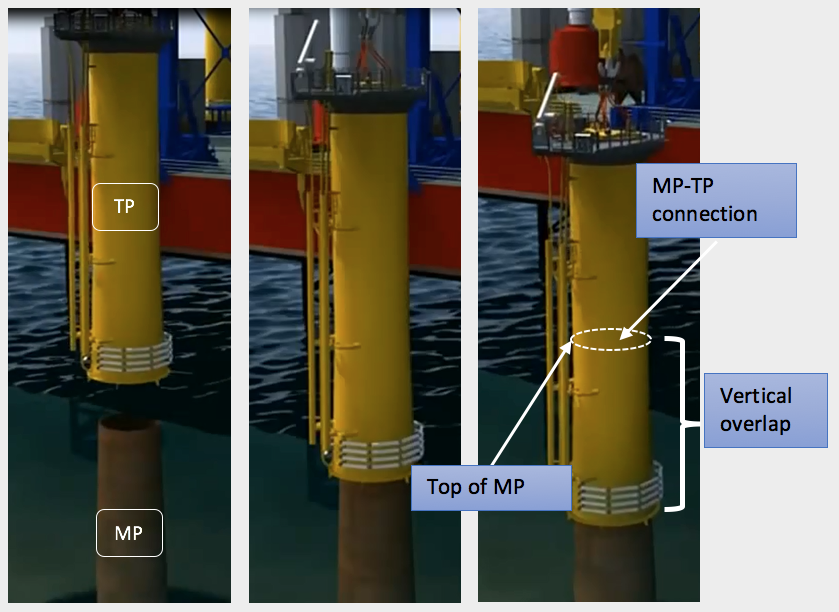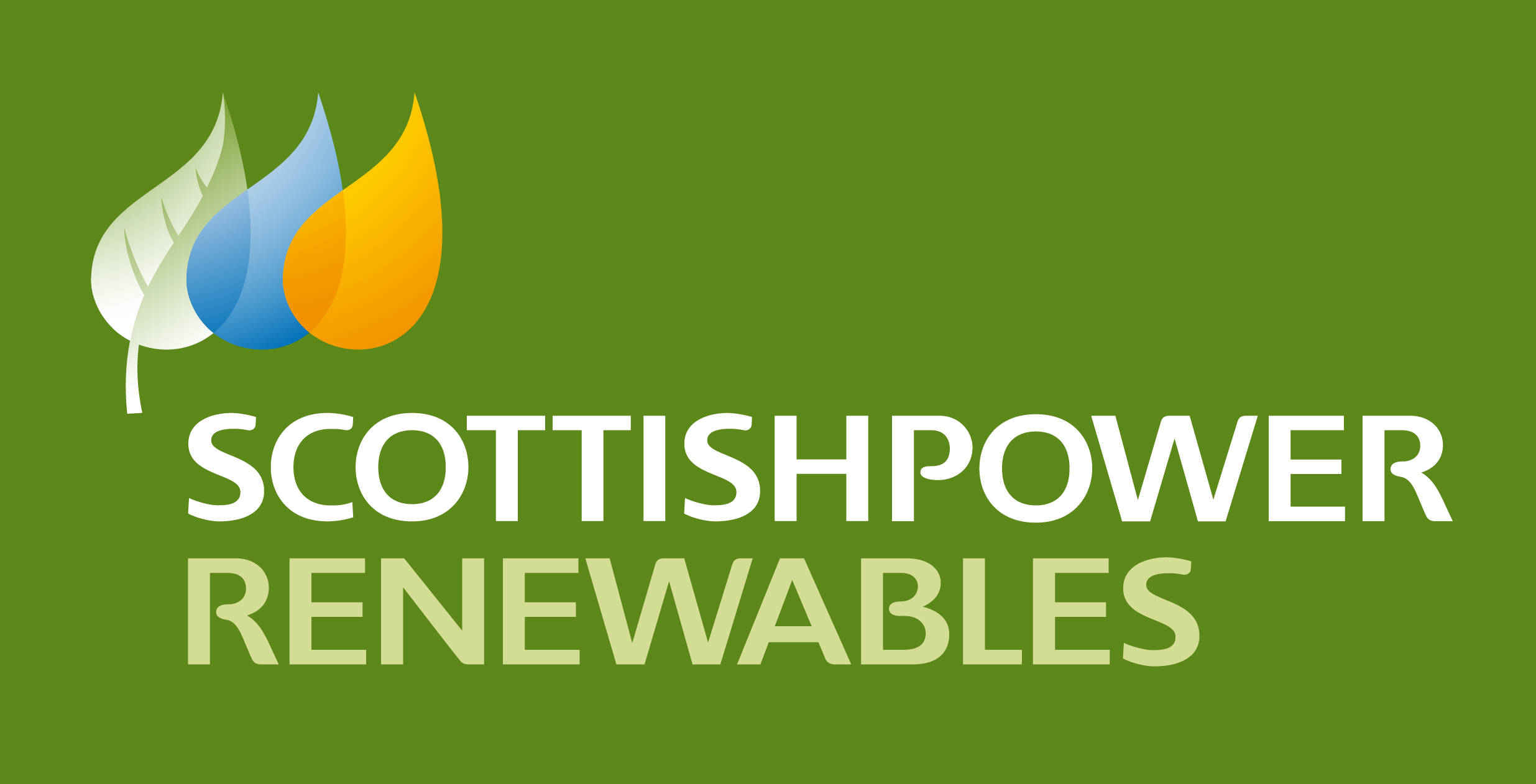Alternatives to non-structural grouting on a large diameter offshore foundation structure
ScottishPower Renewables is looking for innovative alternatives to non-structural grouting on large offshore wind turbine foundations. The winning business(es) in this competition will be given a commercial opportunity to deliver their solution for Iberdrola, and receive support from the KTN, ORE Catapult and the wider InnovateUK network.
Opportunity
Challenge opens
25/11/2019
Challenge closes
07/02/2020
Benefit
Background
The OWiX challenge competition, delivered by the KTN and ORE Catapult, is supporting ScottishPower Renewables to identify innovative solutions to its innovation challenges.
ScottishPower Renewables is considering the use of conventional Monopile (i.e. a single pile) type foundations to support Wind Turbine Generators (WTGs) planned for future offshore wind projects. This concept involves driving a Monopile (MP) into the sea bed and then placing an additional steel structure, the Transition Piece (TP) that contains both secondary steel structures and electrical items, onto the MP. The connection between these two pieces is a bolted flanged connection (the MP-TP connection). A vertical overlap between TP and MP is required in order to ensure that some elements of the TP (anode cages and boat landings) are sufficiently submerged into the water. Finally, the WTG is connected to the TP via another bolted connection (the TP-Tower connection). The process of placing the TP onto the MP is shown in Figure 1 below.

Figure 1 – Schematic of TP placement onto the MP
Due to a desire to reduce the MP length, the top of the pile, and hence the MP-TP connection, is located in close proximity to the water line, typically several meters above mean sea level (MSL). This can be seen in Figure 2 below where typical elevations are presented.

Figure 2 – Typical configuration of MP and TP
This configuration presents a challenge in order to sufficiently protect the steelwork from the corrosive environment as it leaves a void between the overlapping sections of the TP (the TP lower part or skirt) and the MP, where water and oxygen can ingress, posing a corrosion risk to both the overlapping sections and the MP-TP connection. In the case of Figure 2 above, this void space is the volume of air/water located between T.O.S Monopile (MSL+3m) and B.O.S TP Skirt (MSL-4m). This length of overlap in conjunction with an annulus of 50-150mm is considered typical.
Corrosion is typically prevented by grouting the void space between the overlapping sections of the TP and MP. Masterflow 9600 can be considered a typical material used for grouting operations with curing times of approximately 28 days, subject to environmental conditions. Figure 3 shows the arrangement of the MP-TP connection following the pumping of grout into the annulus.

Figure 3 – Final connection between MP and TP post grouting operations
Grouting prevents the process of corrosion by means of:
- Forming a physical barrier against water ingress
- Steel in direct contact with the grout passivation by the alkalinity (pH>12.5)
- In the event that water passes through the connection, oxygen diffusion is prevented as the saturated grout depletes oxygen levels.
Once in place the grout forms a secondary purpose of facilitating load transfer from waves and vessel impacts to the pile. Whilst possible for the TP skirt to transfer these loads to the MP-TP connection, thickness of the TP skirt can be reduced through the additional load path provided by the grout.
The key challenges we face with grouting are:
- The time required to perform the grouting process offshore and the constraints that this process places on the installation window due to water temperature limitations associated with grout curing.
- It’s a very costly process due to material and time requirements to perform the operation with typical grouting times between 5-8 hours per foundation.
Hence, ScottishPower Renewables is seeking a robust alternative to protect the MP-TP flange from corrosion which avoids this need for significant offshore work.
Whilst not limiting the technologies from solution providers, it is expected that solutions would consider innovations from some of the following areas:
- Oil and gas installation
- Infrastructure
- Naval architecture
- Aerospace engineering and manufacturing
- Automotive assembly and manufacture
- Materials sciences
- Insulation manufacturers
- Construction/ tunnelling & infrastructure
- Steel manufacturers
Such a solution could consider the selection of alternative materials, seal configurations or alternative means of preventing the flange (MP-TP connection) from being subjected to corrosion over the lifetime of the wind farm.
To meet the desired timescale and risks, it is preferred that the proposed solution, or the key part(s) of the solution have been commercially proven in other sectors or within a test program which includes offshore conditions (for both installation and operation) trials.
Rewards and benefits
Successful applicants will be given an opportunity to pitch to the Challenger. The package may also include:
- Support from the ORE Catapult or the KTN
- Support in the development of a prototype or pilot
- Technical support
- A place in KTN or ORE Catapult events
- A potential business collaboration
Solution Requirements
Functional Requirements
- A solution to prevent corrosion of the bolted MP-TP connection with a structural arrangement as per Figure 2 shown above
- A robust solution suitable for a design life of 30 years
- Capability to withstanding wave run-up forces, variable water levels due to tidal movements and low temperature application including sea icing conditions
- Capable of functioning in either fully submerged or semi-submerged conditions
- Provision of an alternative load path for imposed loading onto the TP skirt to the MP-TP connection (optional). This prevents the requirement for additional steel on the TP skirt
- Solution will be subjected for individual technical approval for use in German Waters
Technical Characteristics
- Solution should be capable of installation by a range of installation contractors and/or installation vessels without onerous training requirements
- The time required for the placement of the TP onto the MP should be minimised since this lifting operation is reliant on an expensive crane vessel. Subsequent grouting operations can be performed from another vessel
- Solution should not be susceptible to corrosion or should be designed for lasting 30+ years
- Maintenance free, i.e. no requirement for periodical inspections over the duration of the structure’s design life
- Solution should not present the risk of material loss to surrounding water or be considered an environmental hazard
- Ideally the solution would avoid the need for surface preparation on the outside of the MP post installation. Water jetting is currently required prior to grouting operations being performed in instances where the TP is not installed in close succession to the MP because prolonged exposure to offshore environments can easily imply marine growth and other complications so the surface condition of the MP cannot be guaranteed clean enough.
Operating Conditions
- Use in North Sea, Atlantic Sea, Baltic Sea
- Minimum design temperature -15 ºC
- Sea ice conditions
Deployment Timescale
- Launch of the Competition: 25th November 2019
- Deadline for applications: 31st January 2020
- Selection and notification of finalists: 10th February 2020
- Solutions should be:
- Fully deployable for prototype testing within 6 months of competition win
- Full commercial deployment within 2 years
Cost requirement and market opportunity
- Installation (approximate values, dependant on project set up)
- Grout material: 25,000€ per foundation
- Grouting operations: 15,000€ per foundation
- Mobilisation and demobilisation (grouting vessel and equipment): 3,500,000€ for the entire grouting campaign (all foundations) of a typical offshore wind farm e.g. 100 foundations.
- Applications will be judged on competitiveness to meet or reduce these cost objectives
Eligibility and assessment criteria
Entrants to this competition must be:
- Established businesses, startups, SMEs or individual entrepreneurs
Applications will be assessed on:
- Relevance to the topic
- Innovative nature of the subject
- Coherence of the proposed business model
- Feasibility/ economic viability
- Development potential
- Maturity of project/solution
- Ability to launch project quickly/Ease of implementation
- Price/quality ratio
- Suitability for the German, UK and general European Market
IP and Potential Commercial Route
- Existing background IP associated with a potential solution will remain with Solution Provider(s). Where any new IP generation is envisaged, it will be subject to the mutual IP agreement of the Solution Provider(s) and Innovation Challenger.
- Any commercial deployment of transferred solution or newly developed solution, through licensing, joint venture, partnership or direct investment, will be subject to the commercial agreement between the Solution Provider(s) and Innovation Challenger.
- Where necessary, a non-disclosure agreement (NDA) may be signed to uphold confidentiality in the engagement between the Solution Provider(s) and Innovation Challenger.
- Innovate UK and KTN do not take any share of IP ownership or enter into commercial venture through the OWiX programme.
This challenge is brought to you by:




